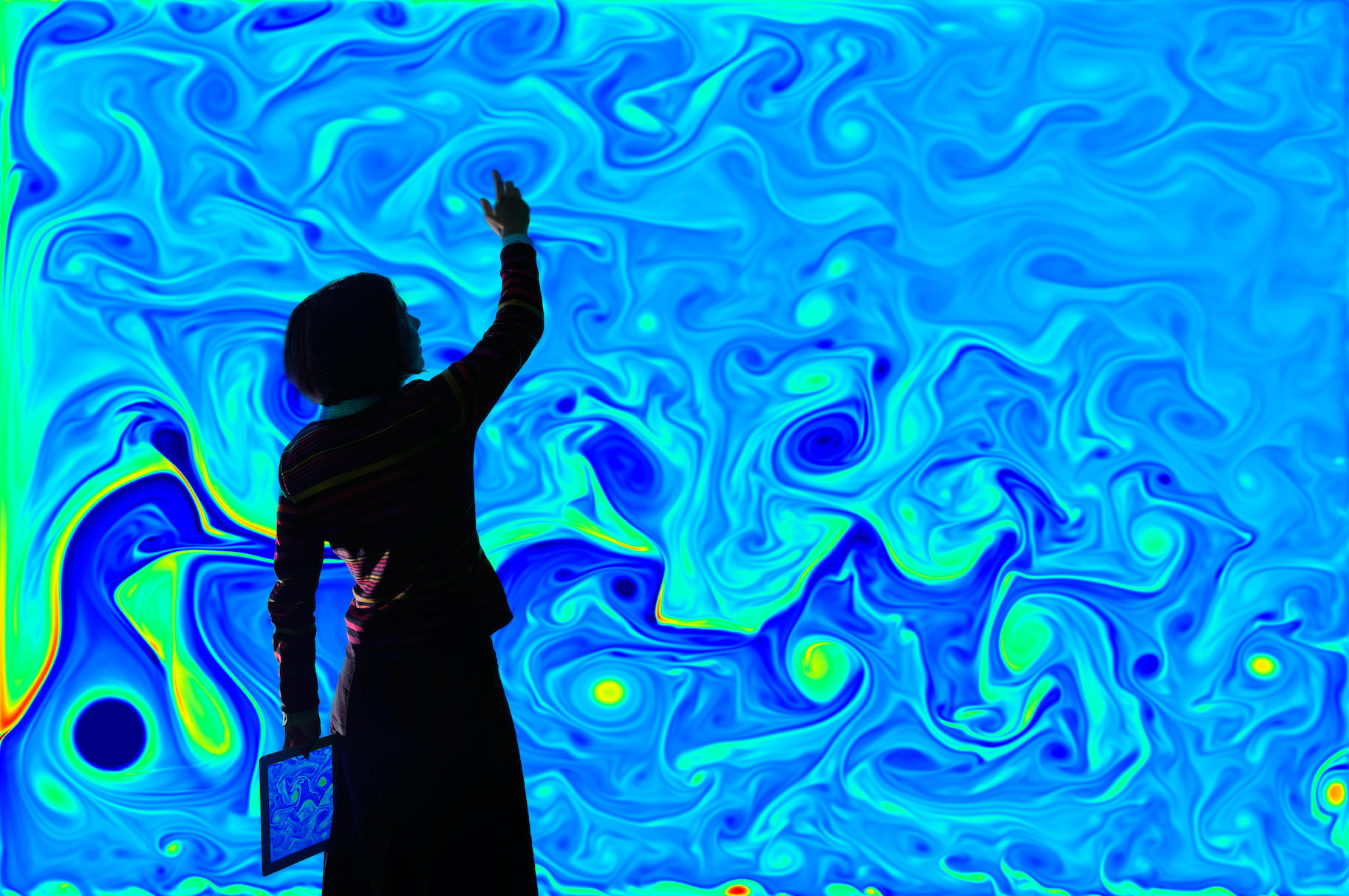Tropical cyclones, Mediterranean waters, pollution slicks: how ocean modelling adapts to regional constraints
Date:
Changed on 02/09/2025

These models have gradually made it possible to tackle increasingly specialised issues, from the fine-tuned prediction of marine currents and water temperature in the short term, to understanding ocean turbulence, rising sea levels and the future of the Gulf Stream.
The AIRSEA project-team (Inria Centre at Grenoble-Alpes University) is developing tools to increase the know-how of these numerical models.
Verbatim
The idea is to be able to adapt a generalist model, to give it additional capabilities, to enable it to address specific issues.
Auteur
Poste
lecturer in applied mathematics at Grenoble Alpes University, member of the AIRSEA team at the Jean Kuntzmann Laboratory (LJK)
This is the case, for example, with the AGRIF software, developed by Laurent Debreu as part of the project team. This adaptive mesh refinement tool enables existing large-scale models to zoom in locally in order, for example, to track the drift of a slick of pollution, an iceberg or goods that have fallen off a ship.
‘It's the first tool we've developed with this aim of giving more local capacity to models. Physicists using this model can simply implement this software on their existing system, and thus have a very high resolution locally’, says Éric Blayo. AGRIF is now used in several realistic ocean simulation models, both in France and abroad.
The AIRSEA project team has also been working for several years on improving coupling methods between ocean models and atmospheric models.
‘In most cases, ocean models are forced by atmospheric models, and vice versa. In other words, we use existing forecasts from one of the models as boundary conditions to create forecasts for the other model’, explains Éric Blayo, before adding ’But this is not enough in the case of certain phenomena, where there is a relatively strong and rapid feedback from the ocean to the atmosphere, and vice versa, meaning that each will have a significant impact on the other. This is the case for tropical cyclones, for example. The two models really need to progress together over time to improve forecasts. But the current methods, with these forced models, constantly create a time lag in the passage of information between the models’.
Improving the methods for coupling oceanic and atmospheric models, i.e. the way in which these two models interact in a synchronised manner, would therefore enable more accurate forecasts to be made of cyclone trajectories over several days.
The project team has therefore tackled this problem, which has made it possible to highlight the strong impact in these models of a purely numerical error associated with a synchronisation fault in the ocean-atmosphere coupling algorithm, and also to show how this error can be eliminated using an iterative coupling method (of the Schwarz algorithm type).
Verbatim
In the case of a tropical cyclone, correcting this synchronisation fault reduces the uncertainties about the cyclone's trajectory and power by 30%.
Auteur
The impact of this flaw has also been highlighted in the context of climate projections, notably through the ANR COCOA project (2017-2021). As the iterations of the Schwarz algorithm for coupling large-scale models are very costly in terms of computing time, AIRSEA is currently working on the development of an artificial intelligence that would be integrated into the model, so as to correct this synchronisation fault at very little cost, based on a few experiments with iterations.
Vertical acceleration (downwelling or upwelling of water masses) has long been neglected in ocean simulation, because it is generally very small, and because taking it into account would involve much greater computing time and cost. However, studying the dynamics of the ocean at an increasingly precise resolution means that we want to finely represent areas where this approximation is not legitimate. This is the case, for example, of the Strait of Gibraltar, the only point of communication between the Mediterranean and the world ocean.
The flow in the Strait is divided into two superimposed layers: an upper layer of lighter Atlantic water enters the Mediterranean, and in the lower layer, the Mediterranean water, which is saltier and denser, plunges from the Gibraltar sill towards the Atlantic, typically passing through a depth of 150m to 1100m.
Verbatim
It is one of the very few places in the world where there are deep-water dives. This vertical acceleration of the water cannot be ignored, as it has major consequences for the general dynamics of the ocean and for the climate.
Auteur
The AIRSEA project team has therefore set about enhancing not only the resolution, but also the physics of the models locally. How did it do this? By providing a calculation technique capable of taking into account vertical acceleration over small areas, and making this local solution interact with the large-scale model, in order to provide it with information, and vice versa.
‘It's complicated because the two models don't have the same physics and therefore don't understand each other physically. So we have to transmit to the large-scale model only what it is capable of understanding, so that the calculations are not disrupted, and the same goes for the local model,’ explains Éric Blayo, before concluding, ’The challenge is to find the best compromise, to get as close as possible to an ideal reference, taking into account the complexity of the two models. In the case of Gibraltar, if we represent this correctly, we will have Mediterranean waters that are better positioned in the Atlantic Ocean.